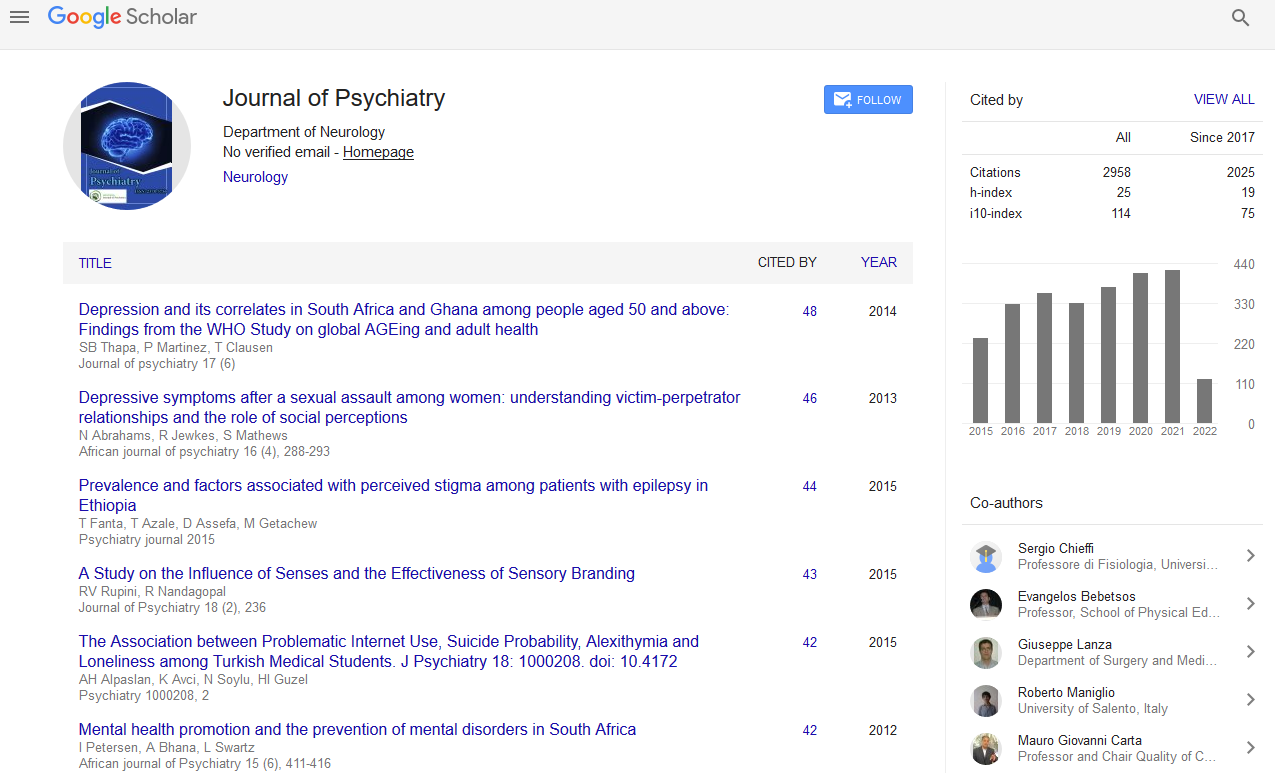PMC/PubMed Indexed Articles
Indexed In
- RefSeek
- Hamdard University
- EBSCO A-Z
- OCLC- WorldCat
- SWB online catalog
- Publons
- International committee of medical journals editors (ICMJE)
- Geneva Foundation for Medical Education and Research
Useful Links
Share This Page
Open Access Journals
- Agri and Aquaculture
- Biochemistry
- Bioinformatics & Systems Biology
- Business & Management
- Chemistry
- Clinical Sciences
- Engineering
- Food & Nutrition
- General Science
- Genetics & Molecular Biology
- Immunology & Microbiology
- Medical Sciences
- Neuroscience & Psychology
- Nursing & Health Care
- Pharmaceutical Sciences
Value Added Abstract - (2020) Volume 0, Issue 0
Immunohistochemical Evaluation of the Pannexin-1 Channel Inhibitor Probenecid Effects in Experimental Induced Brain Ischemia / Reperfusion Injury
Emine Colak, Ertugrul Colak, Dilek Burukoglu, Donmez Semih Oz, Emre Ozkara, Atilla Ozcan Ozdemir and Hasan Veysi GunesPublished: 16-Sep-2020
Abstract
Stroke is defined as a heterogeneous disease that causes dementia and depression and is classified as cerebrovascular accidents worldwide. Based on etiopathogenesis, stroke is examined in five subclasses as ischemic, hemorrhagic, subarachnoid hemorrhagic, cerebral venous thrombosis and spinal cord stroke. 85% of stroke cases are ischemic strokes that are caused by arterial occlusion or insufficient perfusion and can result in death or permanent damage to individuals. In the brain, ischemia and subsequent reperfusion processes trigger various pathophysiological processes including excitotoxicity, periinfarct depolarization, inflammation, nitric oxide production, free radical damage and cell death. As a result of ischemia-reperfusion (I/R) processes, different cell death cascades are triggered. Apoptosis pathways induced in the process of the brain I/R is one of the main cell death pathways. In recent studies, necroptosis, a cell death pathway, has been identified to be functional in the brain I/R process. The channels of pannexin-1 have a wide permeability specificity including cations, anions secondary messengers and metabolites and take part in various pathological processes such as cell differentiation, inflammation, and cell death. In the brain I/R process, the opening of the pannexin-1channels caused hypoxic depolarization, which may result in the cell death.
In this study, the effects of inhibition of pannexin-1 channels on the apoptosis and necroptosis in the brain I/R process were investigated. In our study, two hours of ischemia with clamp insertion to the right arteria carotis communis of the rats and then 24-hour reperfusion processes were provided. To investigate the effects of pannexin-1 channels inhibition, pan-caspase inhibitor Z-VAD-fmk and pannexin-1 channel inhibitor probenecid were used. Six experimental groups were formed in the study: sham, ischemia control, I/R control, I/R+Z-VAD-fmk, I/R+probenecid and I/R+Z-VAD-fmk+probenecid. Brain infarct volume was evaluated macroscopically by TTC staining.

Biography:
Emine Colak is currently working in the department of Medical Biology, Faculty of Medicine, Eskisehir Osmangazi University, Eskisehir, Turkey.

Speaker Publications:
1. Amarenco, P., Bogousslavsky, J., Caplan, L., Donnan, G., & Hennerici, M. (2009). Classification of stroke subtypes. Cerebrovascular diseases, 27(5), 493-501.
2. Bargiotas, P., Krenz, A., Hormuzdi, S. G., Ridder, D. A., Herb, A., Barakat, W., . . . Schwaninger, M. (2011). Pannexins in ischemia-induced neurodegeneration. Proceedings of the National Academy of Sciences, 108(51), 20772-20777.
3. Boyd-Tressler, A., Penuela, S., Laird, D. W., & Dubyak, G. R. (2014). Chemotherapeutic drugs induce ATP release via caspase-gated pannexin-1 channels and a caspase/pannexin-1-independent mechanism. Journal of Biological Chemistry, 289(39), 27246-27263.
4. Culman, J., Nguyen-Ngoc, M., Glatz, T., Gohlke, P., Herdegen, T., & Zhao, Y. (2012). Treatment of rats with pioglitazone in the reperfusion phase of focal cerebral ischemia: a preclinical stroke trial. Experimental neurology, 238(2), 243-253.
5. De Groot, H., & Rauen, U. (2007). Ischemia-reperfusion injury: processes in pathogenetic networks: a review. Paper presented at the Transplantation proceedings.
10th International Conference on Neurological disorders & Stroke; Webinar-August 21-22, 2020.
Abstract Citation:
Emine Colak, Immunohistochemical evaluation of the pannexin-1 channel inhibitor probenecid effects in experimental induced brain ischemia / reperfusion injury, Stroke Congress 2020, 10th International Conference on Neurological disorders & Stroke Webinar- August 21-22, 2020.


